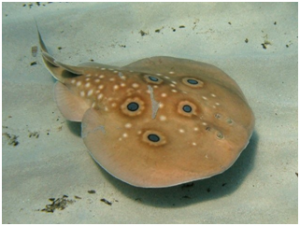 Just about everyone feels pain from time to time. When we feel pain, sensory receptors in our skin send a signal via nerve fibres to the spinal cord and brainstem and then onto the brain where the sensation of pain is registered, the information is processed and the pain is perceived. Usually the signal stops when the cause of the pain is resolved i.e. your body repairs the wound on your finger or your torn muscle. But with chronic pain, the nerve signals keep firing even after you’ve healed. It can interfere with your daily life, keeping you from doing things you want and need to do. But a technique called neuromodulation gives you the independence to control when and where you need pain control.
Just about everyone feels pain from time to time. When we feel pain, sensory receptors in our skin send a signal via nerve fibres to the spinal cord and brainstem and then onto the brain where the sensation of pain is registered, the information is processed and the pain is perceived. Usually the signal stops when the cause of the pain is resolved i.e. your body repairs the wound on your finger or your torn muscle. But with chronic pain, the nerve signals keep firing even after you’ve healed. It can interfere with your daily life, keeping you from doing things you want and need to do. But a technique called neuromodulation gives you the independence to control when and where you need pain control.
WHAT IS NEUROMODULATION?
Neuromodulation is a technology that acts directly upon nerves. It is the alteration or modulation of nerve activity by application of targeted electrical, chemical and biological technologies to the nervous system to block pain signals to the brain
HOW NEUROMODULATION WORKS?
 Neuromodulation works by either actively stimulating nerves to produce a natural biological response or by applying targeted pharmaceutical agents in tiny doses directly to the site of action. The earliest recorded effort at neurostimulation appears to be the direct application of electrical torpedo fish to the human body or placing painful extremities into a pool of water containing torpedo fish resulting in generation of electrical shocks that stunned the nervous system allowing an immediate and residual numbness in the extremity.
Neuromodulation works by either actively stimulating nerves to produce a natural biological response or by applying targeted pharmaceutical agents in tiny doses directly to the site of action. The earliest recorded effort at neurostimulation appears to be the direct application of electrical torpedo fish to the human body or placing painful extremities into a pool of water containing torpedo fish resulting in generation of electrical shocks that stunned the nervous system allowing an immediate and residual numbness in the extremity.
The modern era of neuromodulation involves the surgical implantation of three components:
- A lead– special insulated wires with an electrode at the tip that delivers mild electrical pulses to the affected area
- Extension wires– connect the electrodes to the neurostimulator
- A Neurostimulator– a small robust electronic device similar to a cardiac pacemaker. The neurostimulator is implanted under the skin in the abdomen for SCS or in the upper chest for DBS. Once programmed, the neurostimulator sends mild electrical pulses via insulated leads to targeted areas of the spinal cord, the nerves or brain to inhibit pain signals or stimulate neural impulses where they were previously absent (e.g. cochlear implant).

There are a number of forms of neuromodulation:
- Spinal Cord Stimulation (SCS): is the most common modality where the nervous tissues on a specific portion of the spinal cord are electrically stimulated to block pain signals to the brain.
- Peripheral Nerve Stimulation (PNS): where a specific nerve is targeted to relieve pain locally. The electrodes are placed along the course of the peripheral nerves (outside of the brain and spinal cord). These nerves run throughout the body carrying messages for movement and sensation.
- Deep Brain Stimulation (DBS): is a highly targeted, mild electrical stimulation in the brain which is used to treat movement disorders such as Parkinson’s disease. The use of deep brain stimulation to treat severe intractable depression and obsessive compulsive disorder is being actively explored with promising initial results.
Neuromodulation is an invasive treatment but for selected patients whose chronic conditions cause suffering and disability it can bring considerable relief and improvement, often after all other measures have failed. It is to be hoped that the availability of this clinical and cost effective treatment will continue to increase. Its earlier implementation may even modify the course of some conditions; it should not be regarded as a treatment of last resort.
Sources:
Neuromodulation.com
Clinicalgate.com
